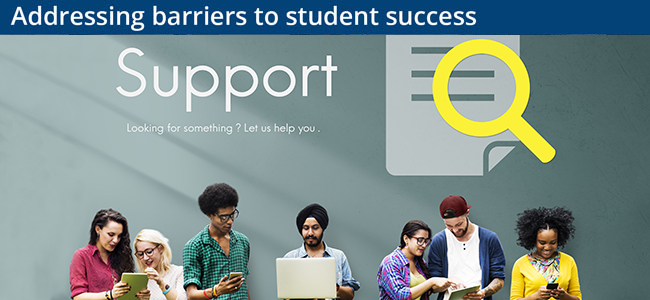Should universities ensure all students receive adequate support?

In November 2017 a student took his former university to the High Court, suing them for £1 million for poor teaching. Cases like this suggest that universities may wish to focus their efforts to ensure all students, regardless of sociodemographic characteristics, receive adequate and equitable support while they are at university.
Equitable support?
'My dissertation tutor always used to run over in the 1-2-1 prior to mine, the [white] student would leave smiling and chatting about their plans for the rest of the day. My experience was the opposite, the tutor would look distracted and I felt I was being accused of demanding too much of his time. He would dismiss me as quickly as he could, sending me off to ‘read something’, ‘do something’, anything other than spend time with him. My hour-long slot would invariably be curtailed to about 10 minutes.' – [Asian female student, 2016]
On paper, both students received the same amount of support – in reality it could not be further from the truth.
Many universities are moving towards a more automated system of identifying and prioritising students who need support – and I wonder, will this lead to a more inclusive and equitable learning environment? Will centralised, data-driven support systems be able to shed light on systemic issues with the institution that result in advantaging some students over others?
Data-driven, personal and proactive support
Within these new systems, student support will be data driven, personalised and delivered at the point of need, often independent of physical location. This is in contrast to the more traditional ‘personal tutorial’ style approach that has been criticised by students for its variability both in terms of fairness and value.
Many students are used to an immediate ‘live chat box’ level of service: information, advice and guidance (IAG) at their fingertips whenever they want it, so why shouldn’t they demand the same of universities?
Already many universities are experimenting with learner analytics, developing dashboards to inform both students and staff of academic progress, and provide real time support. As such, academic and personal support for HE students has the potential to be much more proactive, reaching out to students rather than expecting students to seek out support and turn up to designated offices at scheduled times. It may also allow shared student data and case histories between academic and professional staff, resulting in better targeting of support and resource allocation.
Inclusive practice
With this new model, assuming all things are equal, we should expect all students, regardless of demographics, accessing and receiving support in order to achieve their full potential. Of course, we know that in the past this has not been the case. So how confident can we be that this new model of student support will be inclusive and fair, addressing the attainment gap which has proved to be so stubborn to date?
In this respect, the potential for this new style of support is clear. For example, we know that our most disadvantaged students have some of the longest commutes and so removing the barriers of time and space may improve access to IAG for all. We also know that certain groups of students don’t feel the same sense of institutional belonging and a ‘right’ to support and therefore may not make demands of the university for fear of being embarrassed or rejected. If the new methods of support offered are proactive, based on learner analytics rather than merely demographic features then maybe students in need of support will have less need to ask for help?
There is also the possibility of analysing the context and content of student support conversations; offering transparency in terms of which students are being supported, identifying critical points in the student journey, and the potential to map out the allocation of resources against demand.
Student experience
In order to capitalise on the benefits of such a system of student support we need to understand how it will be perceived by different students. Will those students from more disadvantaged backgrounds, who are often less confident about their transition into university, be given the same level of support their peers demand with relative ease? Will they feel even more ‘lost’ by a system driven by data rather than relationships? Will customer focused centralised systems of support such as ‘live chat boxes’, telephone calls and potentially in the future, artificial intelligence, prove to be culturally neutral, inclusive and equitable?
Learner analytics and artificial intelligence provide real opportunities to help to address disparity of opportunity, experience and ultimately attainment, but we shouldn’t just assume these will occur automatically. Academic and professional staff and accompanying systems and processes will all need to be clearly inclusive, promoting equity of opportunity such that no student is disadvantaged once they are in higher education.

Comments
Report this comment
Are you sure you wish to report this comment?